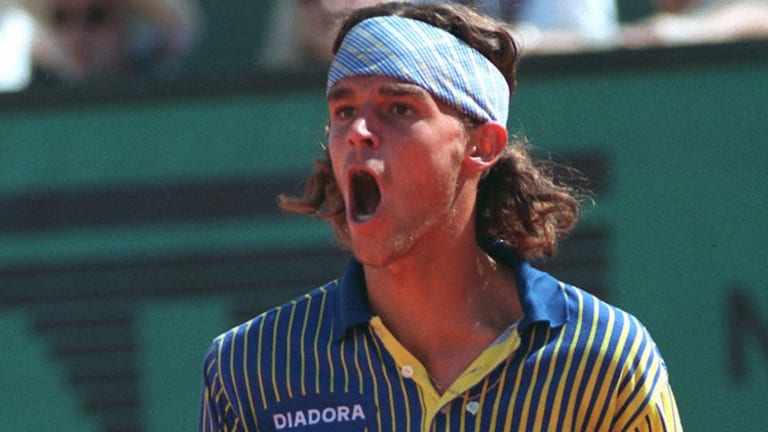The most obvious change that poly has wrought is the one many of us anticipated: The serve-and-volleyer has been driven to extinction. Where bigger racquets juiced up players’ serves, polyester strings made their returns and passing shots too vicious for even the deftest volleyers to handle. Offensive shots could now be hit from defensive positions.
“With polyester, you can back up and take a bigger swing, and you can use a lighter racquet to increase racquet-head speed,” says commentator and coach Darren Cahill. “It made the net game more difficult as the ball was diving faster around the net-rusher’s shoelaces.”
Polyester has done more than change the way pro tennis is played—it has also helped alter its geography. Since 2000, the clay game has been in the ascendancy, and the heavy-topspin style traditionally used on dirt has spread to hard and grass courts.
The decline of serve-and-volley, the emphasis on fitness and defense, the graying of the game, Europe’s rise: poly has had a hand in every significant tennis trend in the 21st century. So how, with 20 years of hindsight, should we feel about this subversive string’s impact?
Cahill speaks for the traditionalists when he says that, “Overall, poly has had a net negative effect.” He mourns the contrasts in styles that came with the serve and volley.
But Brad Gilbert, Cahill’s ESPN televsion colleague, sees the evolution as inevitable.
“The strings take nothing from the game,” Gilbert told ESPN.com. “People say, ‘Go back to wood.’ Well, that’s just antiquated. Football was beautiful in the ’70s, but we’re playing a different game now. Same with tennis. I like what we’re doing.”
As with any technological advance, the story of polyester string is a story of destruction and creation. There may be never be another hard-slice one-handed backhand as elegantly economical as Ken Rosewall’s. But without poly, there could never be a one-hander as jaw-droppingly powerful as Wawrinka’s. While few players today charge the net with the dynamic abandon of Rod Laver or Martina Navratilova, no one in the ’60s or ’70s could match the spins, arcs and angles of Federer or Nadal, or the thunderous power of Williams.
Beauty has been lost and gained, but thanks to a purple string, there’s little question that this era—the poly era; the era of Rafa, Roger, Serena and Novak—will be remembered as a golden one for tennis.



